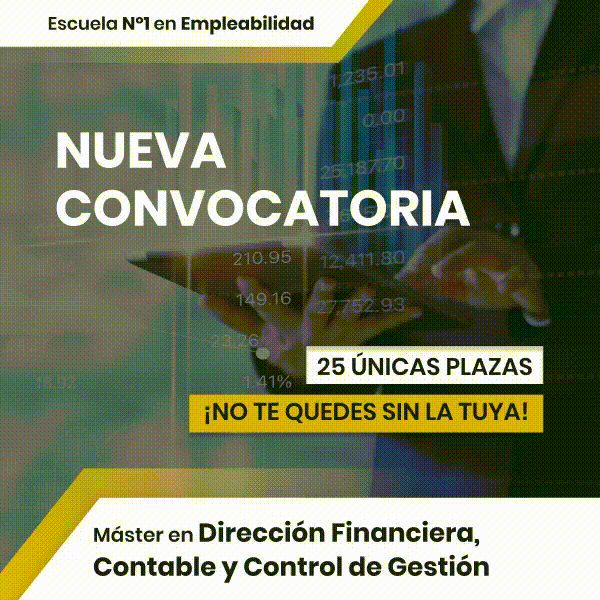Imagine, for a moment, that you had the ability to achieve the objective you want in any negotiation in which you participate, regardless of whether it is a personal or professional matter, nor whether or not you previously know the person with whom you negotiate. The only certainty is that you would always emerge victorious from the negotiation. With this incredible ability, do you think your life would change for the better or that you would continue living as you have done until now? Think about it.
Of course your life would change for the better. have this bargaining power It would be like having a superpower, and you and I know that you would know how to take advantage of it very well.
This superpower of the negotiation, despite the fact that the Super Hero Whoever held it would not star in highly successful action films, he is one of the most desired by any professional, regardless of the project he has to face, the company in which he works, the productive sector, not even the country, nor the time. in which he lives.
Human negotiation capacity
Human beings have striven to find a way to develop their negotiation skills from the moment the ability to speak appeared. Already in ancient Greece, during the second half of the 5th century BC, we find the first documented attempts to systematically analyze man, language, and more specifically discourse. These studies were carried out by the sophists, which has earned them the recognition of being considered the first humanists in the West.
The fundamental focus of the sophists was language, and more specifically discourse; and as a consequence of their research they created new word technologies that they did not hesitate to commercialize. His primary task was to teach the young citizens of Athens to achieve Earring, which is the excellence in the cultivation of eloquence, a competence that was fundamental for achieve success in public life and in private relationships. The teachings of the sophists on semantics and pragmatics taught in the mastery of language, which, being considered a dynamic entity with the capacity to achieve change and create things, was one of the pillars in the search for Earring.
The sophists were accused of mystifying the word, which led to their influence on philosophy and thought being diluted, and they ended up being overwhelmed by the Socratic ideas that were imposed on Western culture. However, word study, persuasion and negotiation continued to develop over the centuries until, starting in the 1930s, scientific work began to search for a negotiation theory.

Although it is true that this research has not yet achieved the desired results - since it is not possible to predict the result of a negotiating process in advance -, considerable progress has been made in the systematization of different models, the understanding and understanding of which equip those who apply them with an obvious advantage over those who do not know them.
The essence of negotiation models
The negotiation models that have been developed over the last century are so varied that they range from the economic approaches of the first works to the mathematical ones (in which game theory plays a fundamental role), the structural, the psychological, the tactical, the psycho-sociological, the sociological, the thematic, the procedural, the communicative, the one-dimensional and the neuroscientific of the most recent era.
I already know that trying to cover each and every one of the models, their weaknesses, their strengths and their suitability to adapt to each type of negotiation that we face, is a colossal job, typical of more than a doctoral thesis. For this reason, in the series of articles on negotiation that this post inaugurates, I am going to share with you the conclusions I have reached after having participated in multitude of negotiations as varied as they are: the negotiation of collective agreements, the purchase and sale of companies, judicial ones, the definition of employer strategies, those carried out before official organizations (Tax Agency, Labor Inspection, etc.), the sale of projects to investors , hiring and firing senior managers, getting my daughter to eat all her vegetables or go to bed at a reasonable time, etc.
What do we call the triangle of effective negotiation?
After analyzing many of the models mentioned above there is one fundamental idea that emerges indisputably: the essence of the art of effective negotiation is built on a triangle. This triangle is made up of strategy, tactics and communication (communication behavior).
The fundamental idea that we must know about strategy is that, when facing a negotiation, we can adopt one of the following fundamental positions: that of cooperation wave of competition (a situation that we could assimilate with the axiom of symmetry and complementarity of the pragmatics of human communication Paul Watzlawick).
Once the strategy is determined, we will apply the most effective tactics at all times, for which we must be aware that the four essential ones are: threat, promise, commitment and concession.
Finally, during all direct and indirect interactions that exist between the different people participating in the negotiation, we must control each communication aspect, both the Verbal communication, the paraverbal and the non verbal, as the relationship existing between each of them. Since you have come this far, I propose that, during the following articles, you accompany me along a fascinating journey in which we will delve deeper into the different aspects of this triangle. However, so that its assimilation and implementation is more effective, I propose that we do it using the methodology investigation action that Kurt Lewin created. For which we will start from my own negotiation model, which consists of 6 phases, and which we will break down so that you can also use it. I will tell you about it in the next article.




































